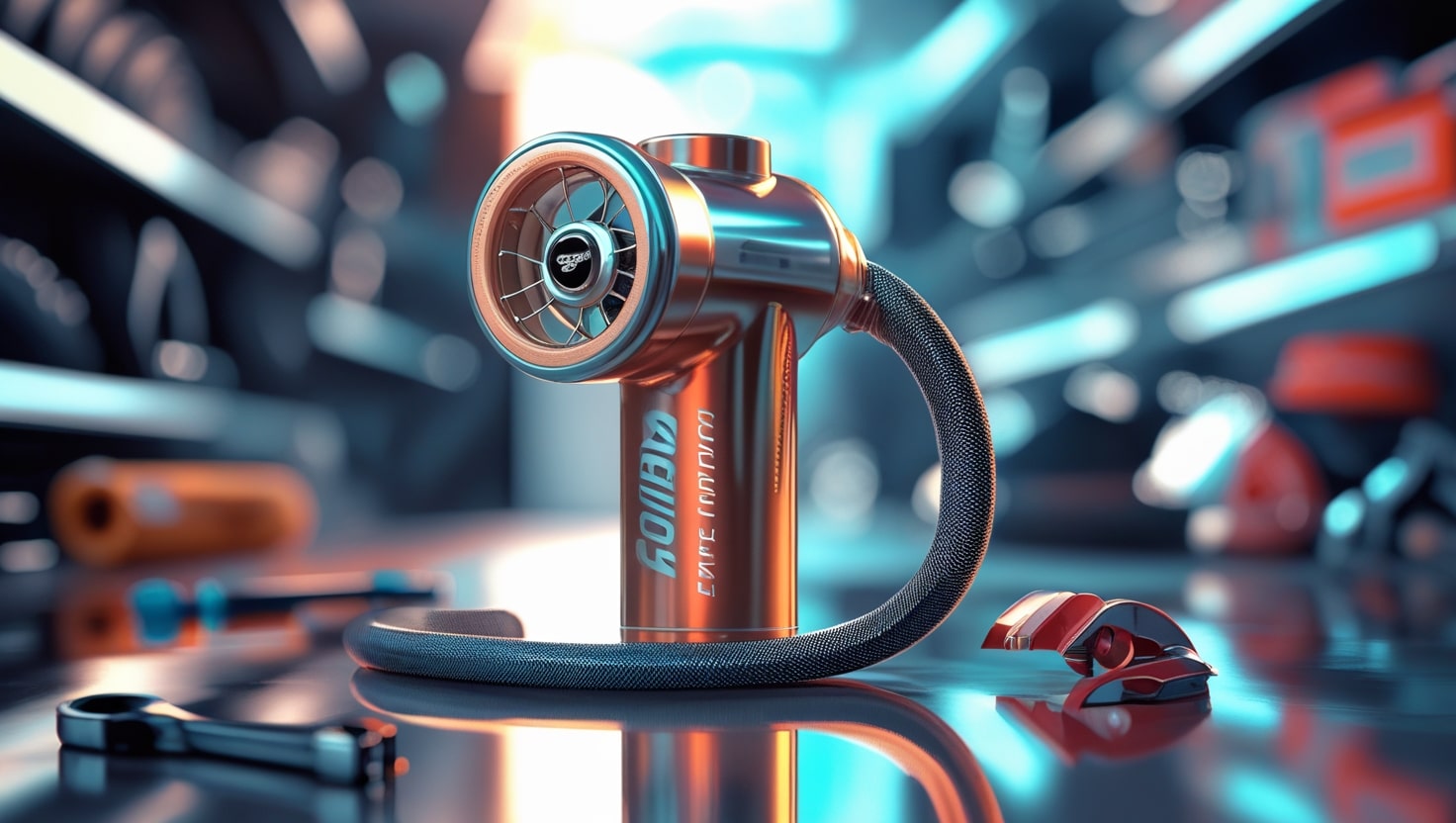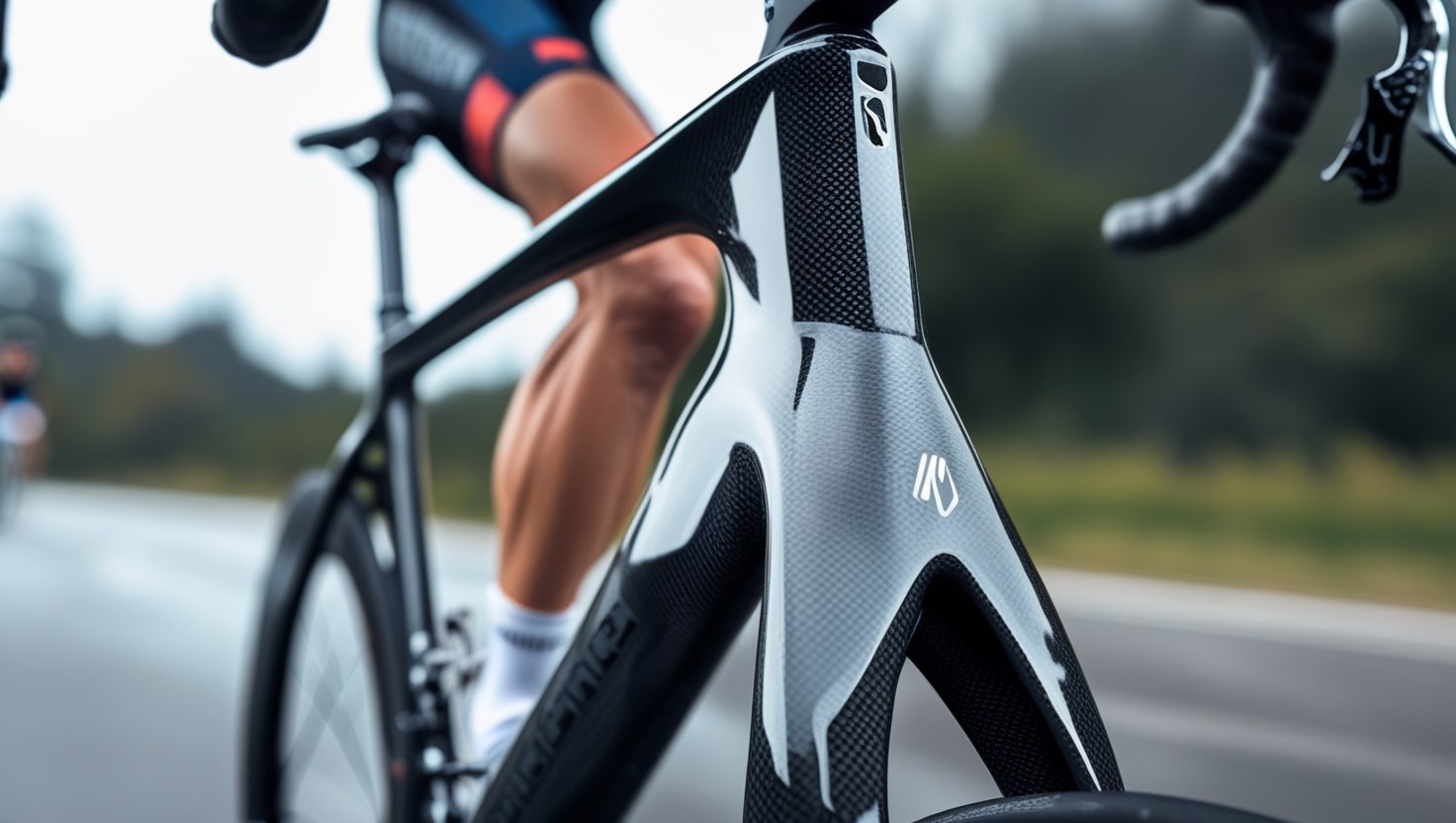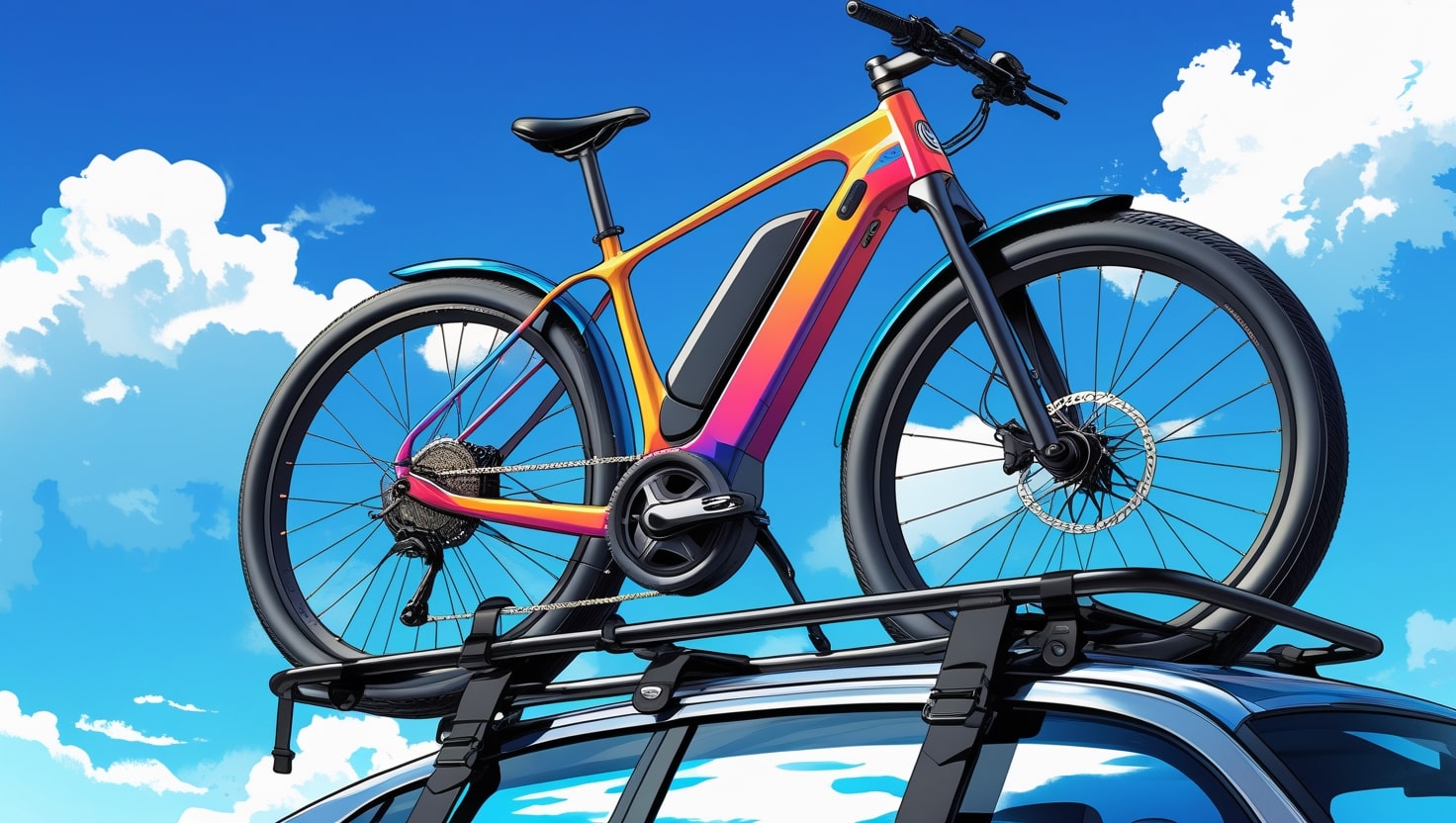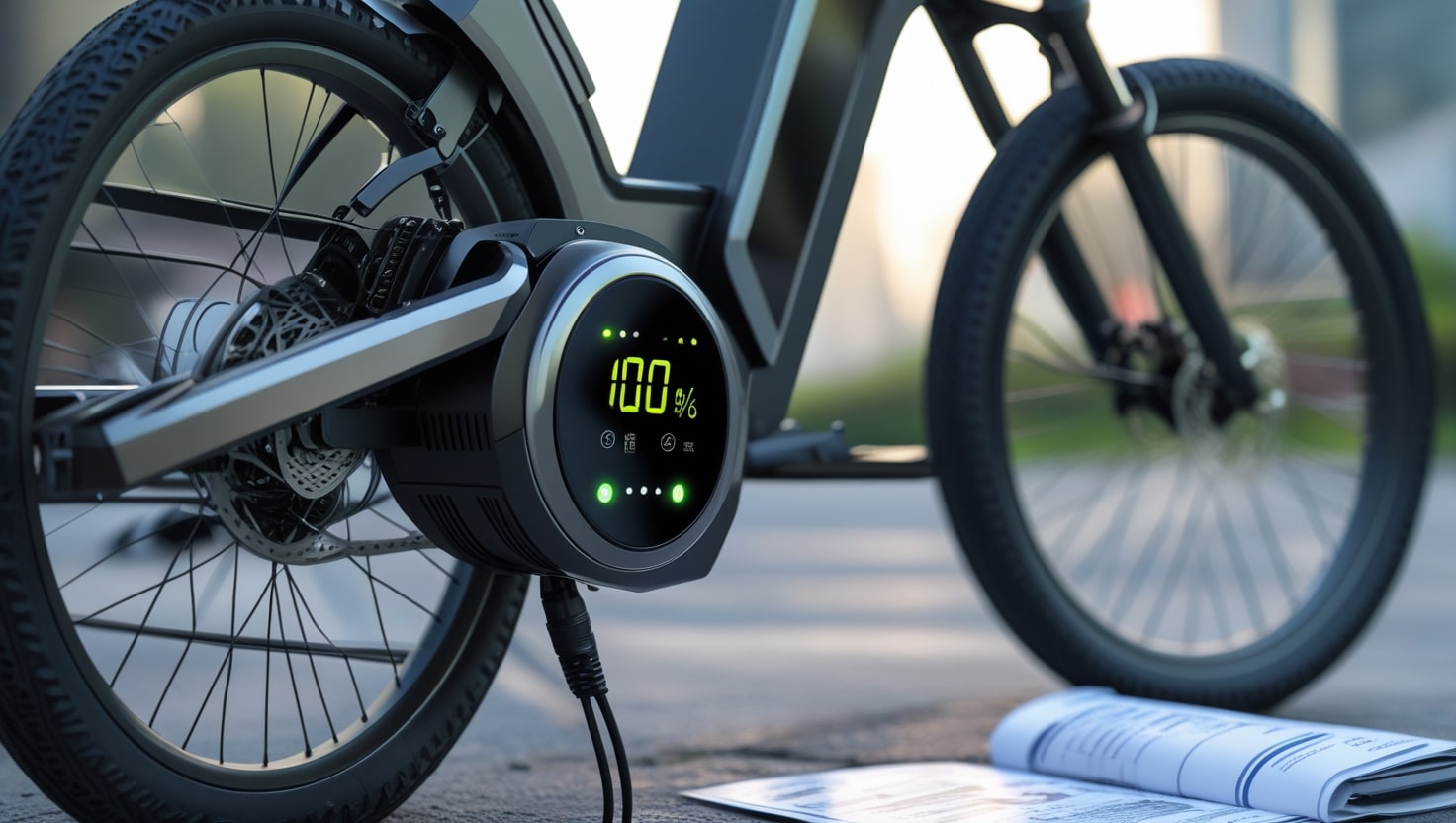If you’ve spent any time on a bike, you know that a cyclist’s ride can go from perfect to problematic in seconds. There’s nothing more frustrating than catching a sharp object and ending up with one of those dreaded flats. I remember one morning ride with a few of my mates when I wasn’t prepared—they weren’t thrilled to be waiting while I fiddled with a patch kit. That’s when I realized the real value of having one of the best CO2 bike tire inflator options right in my pockets. These CO2 inflators are a cyclist’s friend—they’re quick, effective, and truly self-explanatory when you’re stuck on the side of the road.
Over the years, I’ve tested many units, from simple, stand-alone chucks to integrated systems in multi-tools and mini pumps. The best units share a few traits: they get you back riding in seconds, reach full pressure effortlessly, and don’t add hassle with tricky operation. Whether you ride daily or only occasionally, these devices don’t come out frequently, but when they do, they need to perform. That’s why I’ve considered ease of use, size, features, and overall effectiveness while narrowing down this list.
Manufacturers offer various formats—from stand-alone inflators to units integrated into handy multi-tools. The produced gas fills your tire almost instantly, which is a real game-changer when you’re eager to get moving again. Even if you only use them infrequently, CO2 inflators should be considered a must-have for serious riders. Sure, taxes and death are guaranteed, but so are flats, and trust me, you’ll be thankful for anything that makes the process smoother.
Related: 10 Essential Tools for a Bike Ride
best co2 bike tire inflator
CO₂ chucks
Best overall CO2 chuck
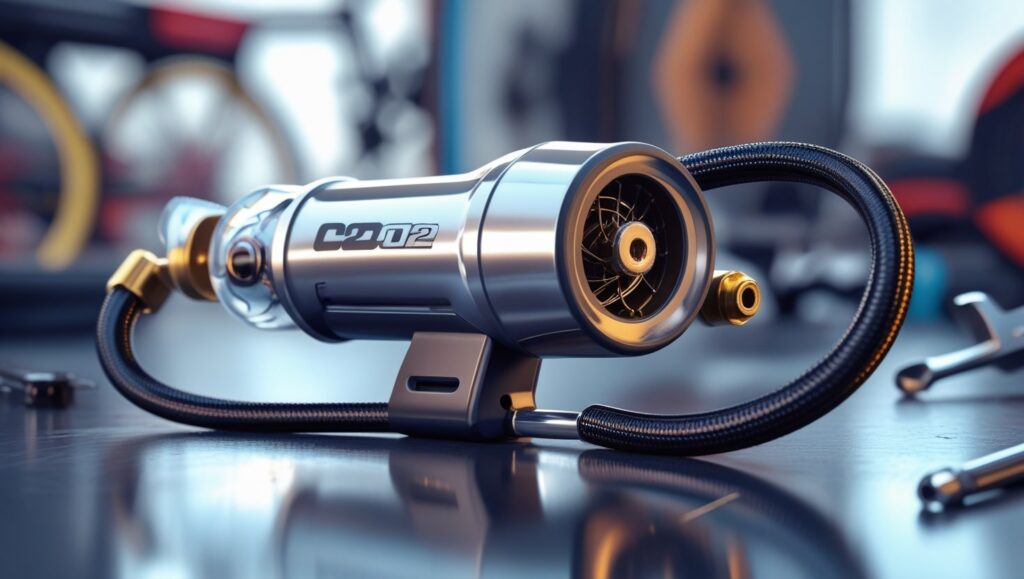
1. Muc-Off Road Inflator Kit
Specifications
Weight: 26g, which makes it incredibly compact and perfect for jersey pockets or saddle bags.
Size: Measures just 4.5×3.5×1.5cm, offering a small size without sacrificing performance.
Valve compatibility: Works with both Presta and Schrader valves, making it versatile for different bikes.
Flow control: outfitted with flow control features to precisely manage inflation.
Controllable: The design allows for controllable release of air, helping avoid overinflation.
Reasons to buy
Easy to use system—just twist and inflate.
Lightweight and compact, ideal for road or gravel setups.
Built with valve compatibility in mind, fitting both common valve types.
The flow control feature means more confidence during high-pressure inflation.
Reasons to avoid
- Can be expensive compared to other inflators.
I’ve tried many products, but few match the execution of the Muc-Off Road inflator. It’s one of those tools you use without a second thought because it just works—cleanly and straightforwardly. The compact size makes it easy to stash in your kit, and the smart designs show how even simpler aspects like parts and threading can be refined. The metal head is moderately wide, so it doesn’t freeze your hands, even when the CO2 cartridges get cold. I didn’t need a foam sleeve, but it still comes with a Neoprene sleeve as a backup barrier, which is a nice touch.
When you’re out racing or in an unsupported event, being ready with your gear matters. The unit feels solid, and the button allows smooth controlling of CO2—whether you want a fast stream or a slow trickle. There is no leaking after the cartridge is screwed in, and the double threading ensures that the chuck remains securely fastened. This kit is primed for both Schrader and Presta valves, so no modifications are needed.
Overall, Muc-Off has done an excellent job with this inflator, focusing on the features that matter. Whether you’re heading into a race or just need peace of mind mid-ride, it performs with no hassle.
Joint best overall CO2 chuck
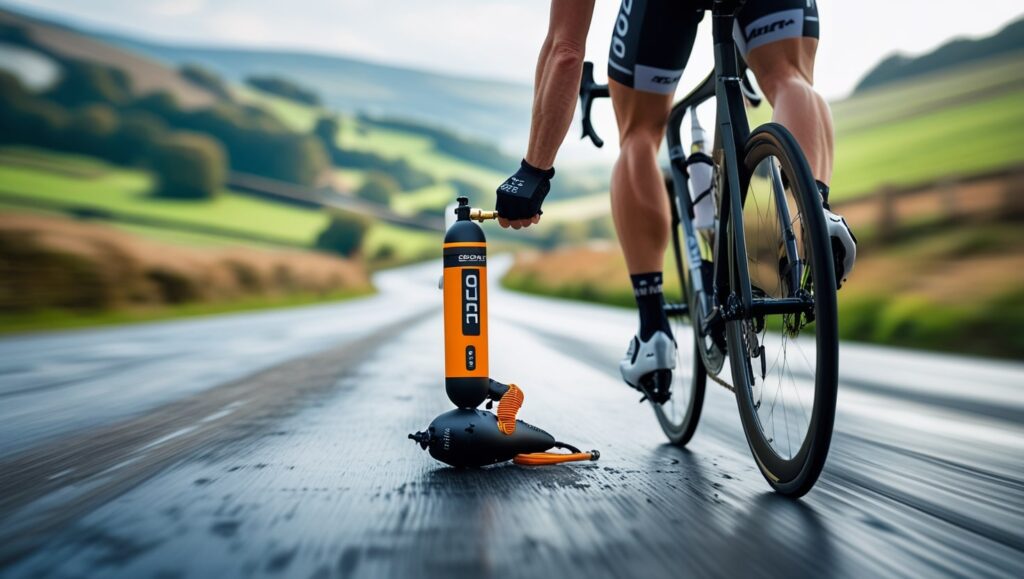
2. Lezyne Control Drive
Specifications
Weight: Just 25g, which makes it ideal for minimal setups or race-day kits.
Size: At 4.7×2.9cm, it’s impressively compact and can be carried in any small pouch or pocket.
Valve compatibility: Designed for both Presta and Schrader valves, covering most bikes without the need for extra gear.
Flow control: Offers precise flow control, so you can inflate with accuracy.
Reasons to buy
Built with smooth controls, allowing you to regulate airflow easily.
Consistently delivers good flow control during inflation, without pressure spikes.
Nicely made with durable materials, making it feel like a premium option.
Reasons to avoid
While compact, some riders might find the push fit less secure under rough conditions.
Riders preferring twist-lock heads may not enjoy the push fit design.
The Lezyne Control Drive is one of those rare tools that gets everything right the first time. Built from CNCed aluminium, the unit has a solid, smart feel in hand and a design that makes practical sense. The gas flow may be easily adjusted during inflation thanks to the flow control knob’s excellent smoothness and dampedness.
Whether you’re using a Presta or Schrader valve, the stepped hole fits perfectly without the need to change parts. I found the push fit mechanism secure, with no leakage when connected to the cartridge. The T-shape gives just enough leverage to screw it in and pierce the seal cleanly.
This is the kind of product I’d confidently toss into my pocket with a half-used canister still attached to the chuck, ready for the next use. Unlike some other brands, including Muc-Off, Lezyne’s Control Drive just works. Everything from the build quality to how it handles CO2 is spot-on. The connection is tight, the chuck stays in place, and the controlled inflation process feels reliable every time.
Inline inflator chuck
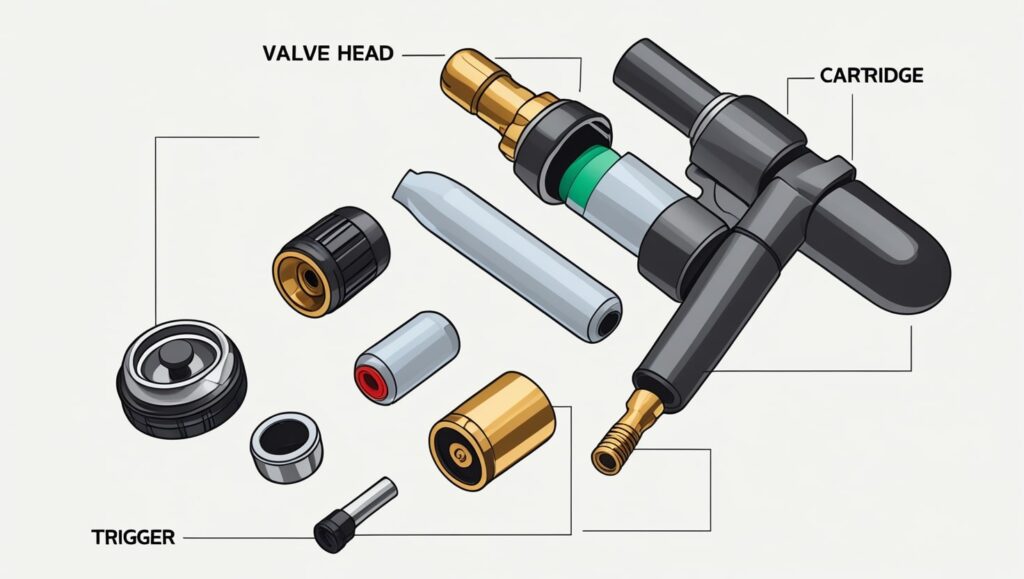
3. Topeak Micro Airbooster
Specifications
Weight: Just 16g,
Size: Measures 6x2x1.8cm, giving it a small and compact profile.
Valve compatibility: Works with both Presta and Schrader valves, which covers nearly all modern bikes.
Flow control: Comes with a yes on flow control, allowing smoother, more measured inflating.
Reasons to buy
Compact proportions make it easy to carry in a saddlebag or jersey pocket.
Compatible with common valve types due to wide valve compatibility.
Smooth and responsive flow control adds precision to CO2 delivery.
Reasons to avoid
The silicone gripper on the head can slip when inflating, especially with sweaty or gloved hands.
Not quite as minimal as the Muc-Off inflator, which offers a tighter fit and slightly better ergonomics.
The Topeak Micro Airbooster is a clever little inflator that delivers strong performance with a minimalist design. It plays a similar role to the Muc-Off inflator, but with a different approach in both execution and shape. It’s longer and thinner, which can help with packing in tighter spaces. One standout detail is the safety spacer, which lets you screw in a CO2 cartridge without accidentally piercing it too early.
Though it adds length to the total package, it’s a smart move for safety. Like the Road Inflator Kit, this inflator supports both Presta and Schrader valves with no need for modifications or adjustments, and the flow can be controlled by how hard you press the chuck onto the valve.
I found that the chuck itself grips fine most of the time, but the silicone sleeve on the outside is where things get tricky. While pushing the unit onto the valve, especially from the bottom, the sleeve began to shift. The gripper didn’t hold well on the sides, and over time it slipped slightly during use.
Despite this small bit of faff, there’s still a lot to like. If you’re the kind of rider who keeps tape handy or wears gloves, you can easily work around the issue. Topeak remains one of the most trusted names in pumps and accessories on the market, and while this model has a few weak sections, it still delivers where it counts.
Best protected
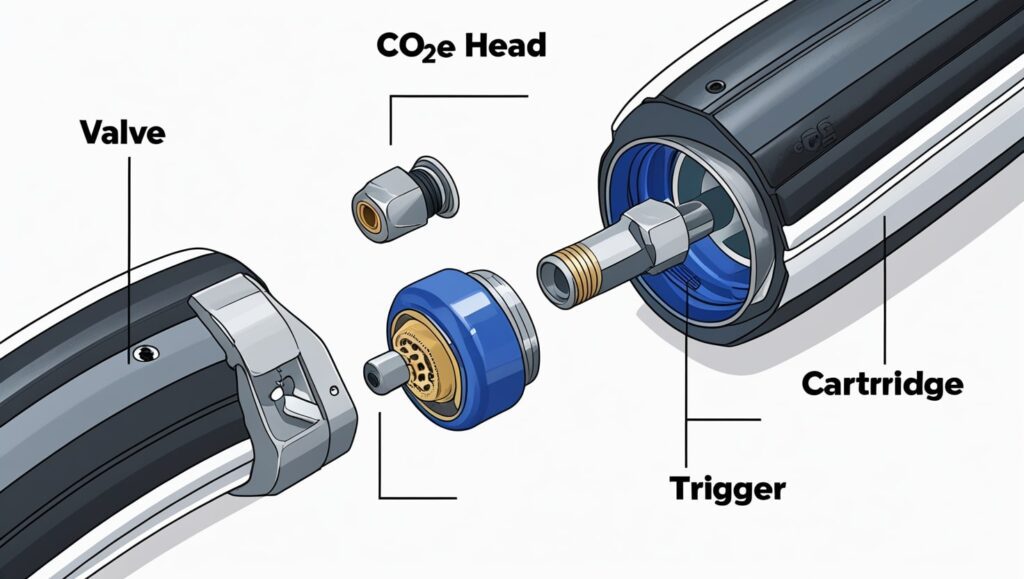
4. Peaty's Holeshot
Specifications
Weight: Just 15g, making it one of the lightest inflators available.
Size: Measures 4.5×2.1cm, a very compact and pocket-friendly design.
Valve compatibility: Works exclusively with Presta valves.
Flow control: Comes with flow control, but it’s fairly basic.
Protective sleeve: Includes a full protective sleeve that encloses the entire canister, offering insulation during use.
Connection: Uses a push fit mechanism for quick attachment.
Reasons to buy
Quick to deploy, great for fast inflation during races or trail-side emergencies.
Comes in a huge range of vibrant colours, adding style to your kit.
Reasons to avoid
Flow control is basic, offering limited precision when managing pressure.
Awkward to remove from the valve once connected, especially with cold or gloved hands.
Limited valve compatibility, only supports Presta, which might be a drawback for some users.
The Holeshot is one of the most stylish and compact inflators available, coming in a wide range of colors that pair well with your frame, valve, or even your sunglasses—a clear nod to Chris King fans. It functions as an inline inflator, similar to the Topeak Micro Airbooster, but has a slightly different inline design. Instead of relying on a twist mechanism, it uses direct pressure on the CO2 cartridge to release the gas, which makes inflation feel smoother and quicker. It’s compatible only with Presta valves, which might limit some users, but it excels in being the lightest on test, making it ideal for weigh weenies and performance riders.
The included starter pack comes with two canisters and a protective rubber sleeve, which is particularly clever. It covers the base and sides of the gas canister, insulating your fingers while also making it easier to grip during cold weather. Even under pressure, the flow control feels much smoother than something like the Speedchuck, and you can easily modulate the flow depending on how much pressure you apply.
The pocket or saddlebag storage is no issue thanks to its tiny device size. The wings give some help while screwing the inflator onto the cartridge, although they’re limited in size and leverage.
That said, not everything is perfect. During testing, there was no leakage of gas, but I did find it hard to remove the chuck from the valve. Whether that was my technique, a threaded valve, or just the frozen connection after releasing the gas, it slowed me down. The force needed to pull it free, especially between spokes, made the process awkward.
Most compact
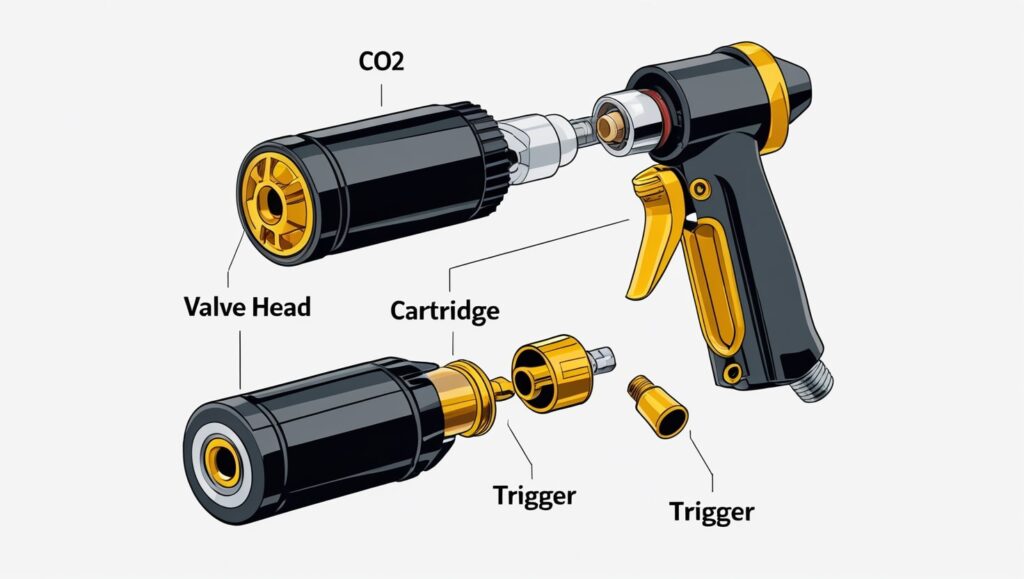
5. XLab Speedchuck
Specifications
Weight: Weighs just 24g, which keeps it among the lightest inflators available.
Size: Compact at 4.4×2.9cm, taking up minimal space in your kit or pocket.
Valve compatibility: Broad valve compatibility is provided via compatibility with both Schrader and Presta valves.
Flow control: Has flow control, though it’s fairly basic and not adjustable mid-inflation.
Reasons to buy
Extremely small and light, perfect for cyclists who prioritize minimalist setups.
Very quick to use, especially in urgent roadside situations.
Works with the most common valve types—Presta and Schrader—so no adapters needed.
Reasons to avoid
The flow control system is basic, offering limited modulation.
Push fit can sometimes feel less secure, especially when dealing with higher pressure applications.
The Speedchuck is built for rapid deployment, perfect for those high-pressure race moments when every second on the stopwatch counts. Its L-shaped device design makes it simple to push onto the valve and press the spring, releasing CO2 instantly to get air back into your tires. But timing matters—if you don’t get it right, you’ll waste a full canister in seconds.
That’s why I always double-check that the chuck is securely attached before releasing gas. It’s also smart to use hand protection because the freezing metal can sting if you’re not careful.
While it’s the least expensive inflator in this guide, it still offers solid performance. The flow control is basic—like the Holeshot, it depends entirely on how much pressure you apply, which can be a bit crude, but it lets you stop at mid-flow if needed. For budget-conscious riders looking to save pounds without compromising too much on control, this is a solid choice that does the job when it matters most.
Best build quality

6. Silca Eolo IV
Specifications
Weight: Just 13g, making it one of the lightest options on the market.
Size: Measures 30mm x 27mm x 12mm, compact enough for any jersey pocket or saddlebag.
Valve compatibility: Works with both Presta and Schrader valves, giving it full valve compatibility.
Flow control: Comes with a yes on flow control, allowing precise regulation of pressure.
Reasons to buy
Small and light, ideal for minimalists or competitive riders.
Beautifully made, with a polished finish that stands out from typical inflators.
Easy to regulate the flow, making inflation feel smooth and controlled.
Delivers a high-quality experience in both build and operation.
Reasons to avoid
It’s more expensive than most of the competition, especially considering performance isn’t drastically better.
The Silca Eolo IV, now in its fourth iteration, is impressively small and lightweight at just 13g. I’ve used a lot of compact inflators, but this one almost disappears into a seat pack, so I recommend going for the black, scarlet, or even green version—easier to spot than the subtle grey. The size and weight make it ideal for riders who count grams, and it’s nearly half the weight of the Lezyne Control Drive. Its construction is solid, with build quality that reflects Silca’s reputation—pure aluminium, no plastic parts, and well-finished O-rings. It may be tiny, but it feels sturdy enough to last a lifetime.
In use, the application is as simple as it gets. First, ensure the flow control is closed, then thread on the canister, press the Eolo onto the valve head, and screw it into place—it’s compatible with both Schrader valves. What impressed me was the gas control, which is incredibly ultra-smooth and variable, giving you precise inflation without fuss.
There is one caveat. Because of its small size, it can feel fiddly, especially if you’re wearing gloves. The all-metal body gets icy-cold once gas is released, and without insulation, this makes handling uncomfortable.
CO₂ pumps
Best as a pump
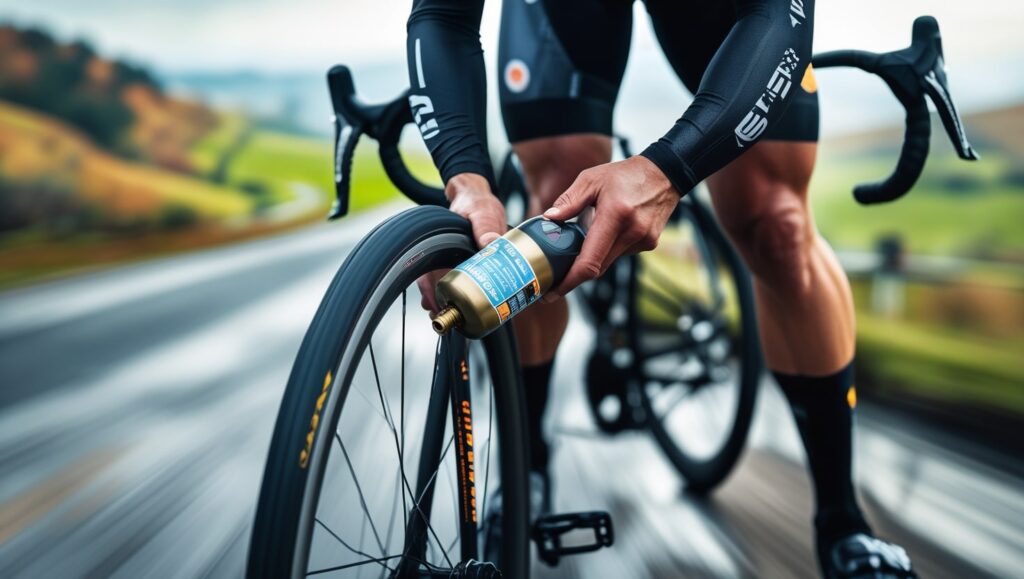
1. Birzman Infinite Apogee Road
Specifications
Weight: Comes in at 142g, so it’s heavier than typical CO2 inflators but offers added functionality.
Size: Measures 25.5 x 2.6cm, making it longer than pocket-sized pumps.
Valve compatibility: Works with both Presta and Schrader valves, ensuring full valve compatibility.
Flow control: Features flow control, though it’s fairly basic.
- Design: Includes a hose for an easier connect experience, reducing strain on your valve.
Reasons to buy
Good pump volume means you can top up your tire quickly without using too many canisters.
A frame mount is included, with space to store canisters—a clever touch for long rides.
The secure connection ensures it won’t pull out the valve core, which is a common frustration with other inflators.
A spare O-ring is provided in case of wear and tear.
Straightforward to use, even if not very intuitive at first.
Reasons to avoid
At 142g, it’s too bulky for pockets or saddlebags.
The flow control is basic and may not offer much precision.
Not very intuitive to connect on the first try, especially in urgent roadside conditions.
The Birzman Infinite Apogee Road isn’t just another CO2 inflator—it’s a full hybrid pump built for reliability and flexibility. It features the Snap-It Apogee connector, which takes a bit of practice to master (I watched a video and followed the instructions, like Tim admits in his review), but once you get it, it becomes second nature.
It’s more secure than a basic push-fit, and there’s no risk of unscrewing the valve core by mistake. With the bottle cage mount, you can carry it neatly, along with canisters screwed in for quick access—great if your saddle bags or jersey pocket are already full.
The flexible steel mesh hose, which may be connected to the pump or the CO2 canister, ensures smooth inflation. Using it as a pump took me around 150 strokes to reach a rideable pressure of 60psi in a 28mm road tire—not bad at all. During use, the interface between the shaft and rubber seal did get a bit hot, so that’s worth noting if you’re inflating multiple tires in one go. When using gas, you screw the cartridge in, which pierces and blocks it, and then you can slightly unscrew to start the flow.
The flow is easy to control, but it must be done gently. Too quick, and you risk releasing all the gas at once.
Best all-rounder CO₂ pump
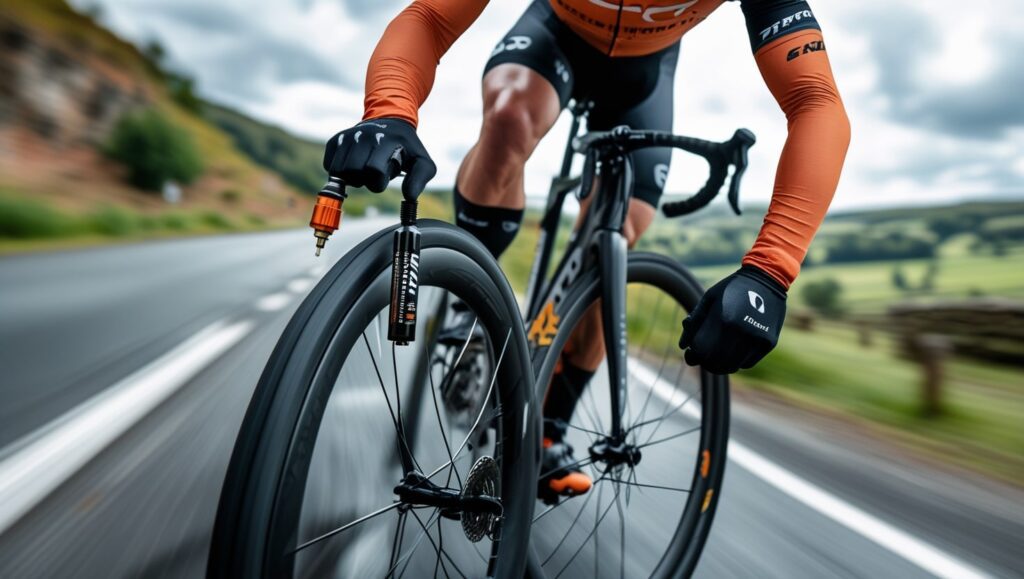
2. Topeak HybridRocket HP
Specifications
Weight: Comes in at 98g, offering a solid balance between weight and durability.
Size: Measures 19x2x2cm, a moderate size that fits well on most frames.
Valve compatibility: Supports both Presta and Schrader valves, providing full valve compatibility.
Flow control: Equipped with flow control for better pressure regulation.
Mounting: Includes a cartridge mount option for convenient CO2 storage.
Design: Built with an intuitive user interface, making it easy for anyone to operate
Reasons to buy
Works with both common valve types: Presta and Schrader.
The cartridge mount option is a thoughtful touch for long-distance riders or commuters.
Intuitive to use—no learning curve for beginners.
Reasonable moderate size fits comfortably on your bike without adding bulk.
Reasons to avoid
At 98g, it’s not the lightest option on the market.
The moderate size may still be too bulky for minimalist riders who prefer saddlebag-only setups.
The Topeak HybridRocket HP is a cleverly compact pump that maintains high performance. Unlike the bulkier Crankbrothers Klic HP Gauge + CO2, this design is more compact and still manages to pack in thoughtful features like an integrated hose and dual valve compatibility for both Presta and Schrader valves.
The CO2 system on one end handles inflation quickly, while the other end functions as a manual pump for flexibility. While it lacks a pressure gauge, it compensates with a sleek form factor and storage for two CO2 cartridges, which I found super useful on long rides. The rubber coating is a bonus—it insulates your hands when the metal turns cold, making it more comfortable during winter use.
Although some road bike purists may argue against attaching pumps to the top tube, especially those also fitted with mudguards, the HybridRocket HP is compact enough not to feel out of place on an endurance bike. Its size and lighter stroke volume (compared to Crankbrothers) mean it fits riders who want speed and efficiency without excess bulk.
Best CO₂ Mini Pump for Compact Size
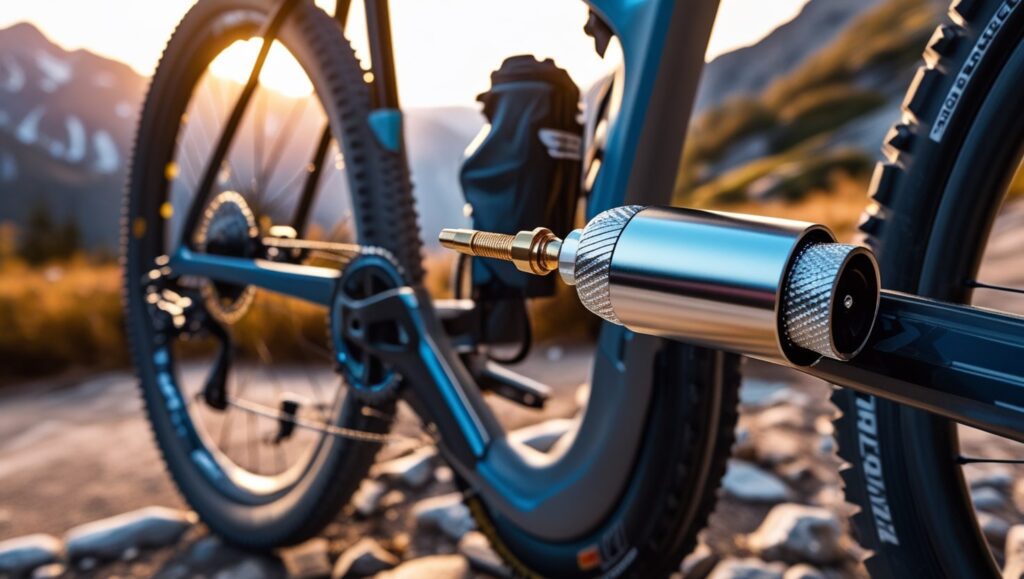
3. XLab Tire Mate CO2 Inflator and Mini Pump
Specifications
Weight: Comes in at just 64g, making it light enough for any ride setup.
Size: Measures 11.5x4x1.7cm, a super compact design perfect for tight spaces.
Valve compatibility: Supports both Presta and Schrader valves for full valve compatibility.
Flow control: Includes flow control, offering better control over inflation.
Reasons to buy
Small enough to fit neatly into a saddle bag.
Lightweight and super compact, ideal for endurance and minimalist riders.
A solid backup option when you’re in a bind and need a last resort pump.
Reasons to avoid
The inflation procedure is not so intuitive and may require trial and error the first time.
While the flow control exists, mastering it takes a little patience.
When size and ease of use are important considerations, the XLab Tire Mate is a small, compact device that offers significant value. It cleverly combines a small pump and a CO2 inflator in one convenient container, despite being just slightly bigger than a CO2 cartridge. It fits easily in a saddle bag, making it ideal as a just-in-case backup. If you’re out for a ride and run out of cartridges, the built-in pump offers extra insurance.
While the volume of air per stroke is minuscule, it’s enough to get rolling again without being left stranded. The low weight and compact design have minimal impact on your setup, which makes it surprisingly useful for endurance riders or anyone trying to avoid bulky gear.
There are compromises, though. Attaching and priming the cartridges takes some faff, and using it as a manual pump is really a last-resort option due to its limited capacity. That said, it’s better than being stuck with nothing, especially after a few failed tries with your CO2 chuck. It’s not a replacement for a bigger, better pump, but it’s a clever backup for emergencies.
Best pump for CO2

4. Bontrager Air Rush Road Mini Pump
Specifications
Weight: Comes in at 74g, making it light enough for long rides without adding bulk.
Size: Measures 14.5 x 2.1cm, giving it a compact size that fits easily in jersey pockets or saddle bags.
Valve compatibility: provides complete valve compatibility by supporting both Schrader and Presta valves.
Flow control: Includes flow control for improved air regulation during inflation.
Reasons to buy
Delivers effective CO2 control, offering precise bursts of air when you need it most.
The size is well designed so it doesn’t freeze up your hand during use, even in cold conditions.
Has a quality feel—solid materials and smooth operation add confidence on the road.
Doubles as a manual pump for added flexibility in emergency use.
Reasons to avoid
The Presta valve connection feels a bit odd compared to other inflators—it may take an extra second to seat correctly.
As a pump, it’s meant more for emergency use than regular inflation—it won’t replace a high-volume hand pump.
A small, multipurpose micro pump and CO2 inflator, the Bontrager Air Rush is small enough to carry in your pocket, purse, or toolbox. Its smart connector design works with both Presta and Schrader valves, and you simply extend the tip for Presta use.
One standout feature is the flow control valve, which is knurled and easy to adjust, allowing metered gas release when using a CO2 canister. Despite its diminutive size, it’s well built with threaded sections for attaching canisters and includes a bottle cage mount—though the mount can be a bit tight and awkward.
During my testing, I found it fine for emergency use, though using it as a pump isn’t ideal. It took over 300 strokes to get a 28mm tyre to around 60psi, which is doable but exhausting. The connection to the valve felt a little fiddly at first—you need to push it down firmly and then screw it tight to form a secure seal.
Compared to something like the Apogee, which is a good pump and an adequate CO2 backup, the Air Rush falls at the other end of the spectrum—a strong CO2 inflator and a last resort pump. It’s best kept tucked away, protected from the elements, and relied upon when your main gear fails.
Best pump for CO2
What is a CO2 inflator?
CO2 inflators are small, fast tools that help you inflate a flat tire using compressed gas stored in a CO2 canister or cartridge. They work by connecting a chuck to your tire valve, then using a screw mechanism to release the gas, inflating your road tires, gravel tires, or even MTB tires in just seconds. Most CO2 cartridges hold around 16g of gas for narrower tires, while larger volume 25g cartridges are better suited for bigger MTB setups.
To compare, a petrol car in the US or UK emits about 180g of CO2 per kilometer, so your car’s use is minimal in that context. Whether you’re riding on tarmac or trail, a CO2 inflator offers a quick fix when you’re in a rush.
Almost all cyclists used to carry a mini-pump, but these days, sleeker setups—typically a CO2 inflator with canisters—are frequently seen tucked into jersey pockets. Every choice, however, has a unique mix of benefits and limitations.
CO2 inflators and canisters pros and cons:
| Pros | Cons |
|---|---|
| Lightweight and low bulk make them easy to carry on any ride. | Each canister is for one use only. |
| A quick blast of pressure gets your tire up in seconds. | It can be tricky to hit the desired PSI. |
| They can reseat a tubeless tire when needed. | They are not reusable and not eco-friendly. |
Mini pump pros and cons:
| Pros | Cons |
|---|---|
| A pump offers endless tyre inflation and never runs out of air. | Reaching even 80 PSI takes real effort and tires your arms. |
| It’s easier to hit the right pressures accurately. | Mini pumps are bulkier and harder to carry than CO2 inflators. |
Using CO2 for quick inflation when necessary and keeping a small pump on hand are popular tactics. However, some riders who would rather carry a lighter, more silent load can decide to use only CO2 and take a chance.
What should I look for in a CO2 inflator?
Wrap that canister
When a CO2 canister starts releasing gas, the metal canister drops to freezing point, and if you’re not careful, it can stick to your gloves or even your bare fingers. That’s why a wrap—like a sock, sleeve, or part of the inflator’s design—can save you from serious discomfort. It also helps prevent rattling in your seat pack or saddlebag and keeps everything snug and secure on your ride.
Reduced bulk
Light, compact tools are essential for long climbs and difficult terrain. A CO2 pump should fit easily in your pocket, bottle cage, or wallet-sized tool pouch without adding unnecessary weight. If you’re tackling a hill or riding fast, even shaving grams matters. Reduced bulk also makes it easier to store your inflator and canisters together.
Ease of use
You don’t want to deal with faffing or complex mechanism when you’re tired, cold, and stuck with a flat. Look for a system that works quick, smoothly, and easily, with a simple chuck that doesn’t need much thinking. A poor connection wastes time and air. Push fit systems are often faster, though they do require careful handling.
Pressure tap
Some inflators come with a pressure control valve, letting you apply just the right amount of air. That’s useful for avoiding blowing the inner tube or risking pinch punctures when fitting the tire. This feature may be a bit expensive, but it adds precision. Whether you’re inflating smoothly or in bursts, a pressure tap gives more options.
Threaded/non-threaded canisters
CO2 canisters vary—some have a threaded tip, others are smooth. Make sure your inflator is compatible with the type you’re using. While threaded canisters offer a more tight, controlled fit, they usually take longer to attach. Non-threaded versions are simpler but might lack security. Always check your inflator’s thread style before you buy more gas.
Thread fit or push fit
Some chucks need to be screwed on, which can give a secure seal but might also lead to unscrewing the valve core if you’re not careful. These thread fit types work best with valve extenders or threaded valves. On the other hand, push fit is faster and avoids disturbing the valve core, but everything must be tight and aligned to avoid wasting gas. Pick based on what works best for your bike, tire, and how you want to use your inflator.
Is CO2 compatible with Tubeless Sealant?
Many riders think CO2 and tubeless tire setups are a perfect match, like hot coffee and cake. But the truth is, this combo can bring a problem. If you read the back of your sealant bottle, you’ll often find a warning not to use CO2 canisters. One reason is the frigid burst of gas that hits the inside of the tire. This extreme cold, known as thermo shock, can cause latex sealant to polymerize, turning it into solidified lumps that rattle around in your tyre.
Another issue is that over time, CO2 can make some sealants separate, reducing their performance. Thankfully, there’s a smart workaround. When inflating, try to rotate the wheel so the valve is at the top—around 11 to one o’clock—so the tyre-borne sealant pools at the bottom (around six). This gives the gas a better opportunity to warm up slightly before it hits the sealant, avoiding that harsh assault.
If you’re fixing a flat roadside and use CO2, just remember to deflate and re-inflate the tire with air once you arrive safely home. Rather than detracting from your tubeless riding experience, a little planning and preparation can improve your setup.
How many cartridges does it take to fill up a tire?
If you’re using road tires, one 16g cartridge is usually enough for full reinflation and will push the pressure past your desired level, so you may need to back off a little to avoid over-inflating. For gravel bikes or larger volume tires, it’s smarter to use a 25g cartridge. While a 16g canister might provide enough volume, it likely won’t generate sufficient pressure to reseat tubeless tires, especially when quick reinflation is needed.
Are CO2 cartridges single use?
Yes, once installed in the head, a CO2 cartridge becomes a disposable item, meant for just one use. After your tire is back on, you’ll want to vent the remainder of the canister by pressing the head against something—not your finger—or opening the valve carefully.
If you unthread the cartridge without venting, the gas might spray out in an uncontrolled mess. Also, don’t stow it away in your jersey pocket without doing so, or it might vent itself mid-ride. On longer rides, it’s smart to carry a couple of spare cartridges, just in case the worst happens.
Does CO2 leak out of bike tires?
Yes, carbon dioxide is a smaller molecule than the mix of molecules found in regular air, which means it can seep through the rubber of your tires more easily. This often leads to your tire going flat faster, not immediately, but usually by the next day. Based on my experience, the best advice is not to rely on CO2 for multi-day events. If you do use a CO2 inflator, remember to deflate and refill your tires with a standard pump once you’re home to maintain proper pressure.
How we test
To find the best CO2 bike tire inflator, we tested a wide range of CO2 chucks and CO2 pumps by checking their inflating abilities, ease of use, size, packability, and overall value for money. Each pump was also tested without a cartridge to see how it performed on its own—sometimes taking several hundred strokes, which left our arms feeling quite weary.

